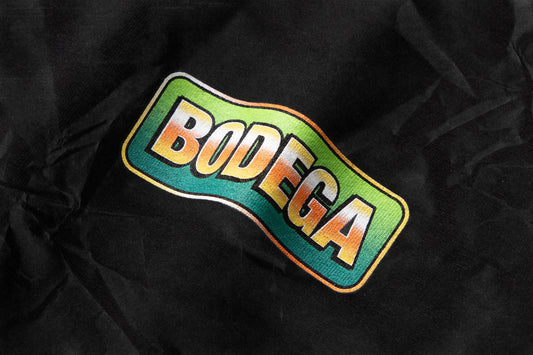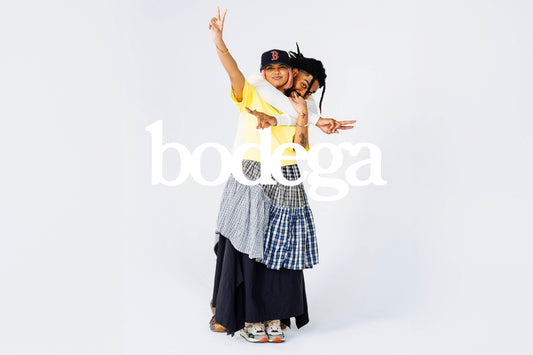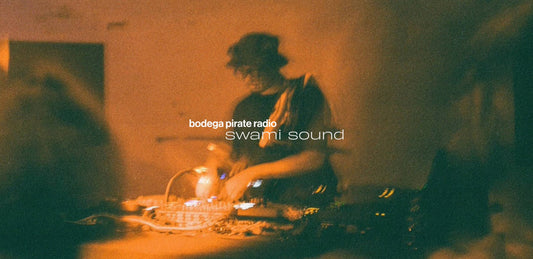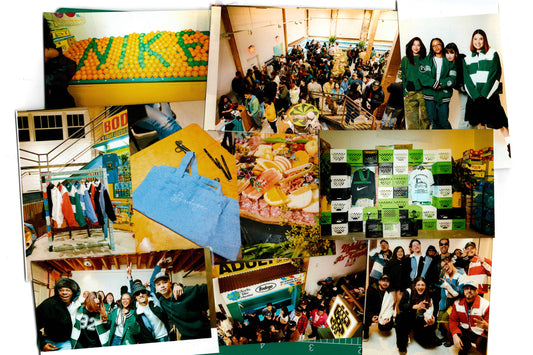With a new season underway, and a slate of collaborative releases citing “terrace culture” as inspiration to go with it, you can’t help but wonder, in the year 2018 exactly what frame of reference does the average sneaker enthusiast have for this bygone era. It’s been almost thirty years since terracing was done away with in England’s stadiums and grounds. “Terrace culture” as a turn of phrase can’t help but feel more than a bit vague and euphemistic.
For the uninitiated, terracing refers to the standing spectator areas that were located behind the two goals. Exactly as the name would suggest, terracing was a set of oversized, concrete steps where fans stood and watched the game. If you’re wondering why anyone would bother getting worked up about blocks of concrete that were demolished decades ago, it’s because, for a lot of people, terraces came to embody the culture of the game in England.

With admission to the terraces priced significantly cheaper than seats, terraces became home to the most vocal, hardcore element of a club’s support, which skewed demographically towards young, working class males. Serving as the home for a younger, rowdier breed of supporter had a twofold effect on how the terraces were perceived. Not only was the famed “atmosphere” inside of English grounds largely attributable to the singing, chanting and yelling from the terraces, but the youth culture taking shape outside the game would come to be reflected on the terraces. In short, the terraces were blessed with the all-important cool factor, which only added to their allure.
The flip side to youth culture finding its way into the grounds and stadiums of England was that the tribal street fighting that set, say, mods and rockers against each other became part and parcel of the matchday experience. For many years, the standard response by home supporters to an away goal would involve promises of ambulance rides, kicked in heads, or both. In the 60s and 70s, the prevailing clothing style to go along with this terrace scrapping was classic skinhead stuff: flight jackets, boots, denim and scarves flying club colors.
 As the 70s gave way to the 80s, a new sartorial outlook appeared on the terraces. as the chic leisurewear that well to do supporters on the continent favored, made its way across the Channel. The age of the casual had arrived. The “casual” style that contemporary celebrators of terrace culture look so fondly on was more than just an evolution in culture, the style developed, in part, as a response to attempts by the authorities to prevent stadium violence. Police trained to expect boots and denim were definitely thrown off the trail when the shift to designer sportswear occurred.
As the 70s gave way to the 80s, a new sartorial outlook appeared on the terraces. as the chic leisurewear that well to do supporters on the continent favored, made its way across the Channel. The age of the casual had arrived. The “casual” style that contemporary celebrators of terrace culture look so fondly on was more than just an evolution in culture, the style developed, in part, as a response to attempts by the authorities to prevent stadium violence. Police trained to expect boots and denim were definitely thrown off the trail when the shift to designer sportswear occurred.

But to focus entirely on the clothes, as if the events on the terraces took place in a vacuum, would be to gloss over significant developments in the story. The outside culture being mirrored inside stadiums was getting darker and darker. Youth tribes and popular music became informed by a very real life sense of social unrest. Disorganized scraps and youth tribes metamorphosed into orchestrated acts of grievous violence, and racist groups like the National Front gained a presence on the terraces, to accompany their modest ballot box successes. The famed “atmosphere” became toxic all too frequently, as terrace banter became freely peppered with horrific racial abuse directed at nonwhite players.


The nadir of the terrace culture where violence wavered between encouraged and tolerated came in 1985, at Heysel Stadium in Brussels, Belgium. Before the kick off of the European Cup Final between Juventus and Liverpool, Liverpool fans were able to breach the ineffectual barriers separating their section of the ground from the Juventus supporters, and mounted a demonstrative “running” attack on the Italian fans, who understandably, fled. A wall collapsed under the weight of Juventus fans trying to get out of the way of the rampaging English, and 39 people were crushed to death. In the aftermath, all English clubs were banned from European competition for five years. Popular opinion turned openly condemnatory towards soccer.
An entire sport was tainted by association. It’s impossible to imagine now, in an age when the Premier League is the number 1 global brand, but any kind of identification with soccer was proof that one was a violent hooligan criminal. Ipso facto, anyone attending a match would be judged to have the capacity to cause grievous harm to their fellow humans, or costly property damage to the municipality; as such, they would have to be preemptively rendered unable to loose their criminal passions upon the world. Enclosing terracing in spike topped, maximum-security fencing was deemed an acceptable remedy.

The combination of disdain and physical containment meted out to supporters would directly lead to unspeakable tragedy. As the 1989 FA Cup Semi Final between Liverpool and Nottingham Forest was set to begin at Hillsborough in Sheffield, a failure in crowd control at the turnstile entrances to one of the terraces led to a mass number of people being herded into a section of terracing far beyond its capacity. The subsequent crush of bodies resulted in the deaths of 96 people. Police officers manning the gates that led from the terrace to the field steadfastly refused to open them, which would have allowed fans to escape the crush. In other words, they chose to act, in accordance with official doctrine, that any fan attempting to escape the terrace was a hooligan mounting a pitch invasion. Once the facts of what happened at Hillsborough, and the sheer scope of the tragedy became public knowledge, it was obvious that everything would have to change.
The government inquest into the disaster recommended that, in the interests of safety, standing areas be abolished. As this process coincided with the inception of the Premier League that transformed top flight soccer in England into an astronomical, big money venture, and the introduction of more sophisticated and determined efforts to deter hooliganism, the terrace culture that was synonymous with the game for so many years was simply removed from stadiums, for good.
Depending on who you ask, the end of terraces led to either a revitalization of the game, with regular people no longer having to fear a meeting with the mutant offspring of Francis Begbie and Jack the Ripper, or it filled the stands with day tripping dilettantes, and killed off the true, loyal fans once and for all.

Here’s where things start to get complicated. The very nature of a general admission space like a terrace meant that people from all walks of life stood on them. So, yes, a person there to express devotion to the club of their choice and a person there to bodily assault someone wearing the wrong color scarf could and did occupy the same space, for entirely different reasons. It would be functionally impossible to declare one set of circumstances as the “real” thing. Numerically, the hooligan element was decidedly in the minority, but they can’t simply be hand waved away. Conversely, the genuine supporters can’t be tarred with the hooligan brush because of physical proximity. But it leaves us back at the original problem; what is someone saying when they say terrace culture?
The impulse to romanticize the terraces is understandable. In a culture that glorifies the “authenticity” of old school hardships against the “sanitized,” apparent ease of modern life, the rough around the edges conditions represent a connection to a purer form of the game, where buying a top flight striker wasn’t measured out in NASA budget figures, but trying to pick and choose the choice cuts while sweeping the genuinely horrific stuff under the carpet is ultimately irresponsible.
It’s probably for the best to remember that terrace culture is one of those things that can sound completely different to the person saying it and the person listening to it. It’s shaky ground to stand on if you don’t have the whole picture.
Words by Dan Alvarez








